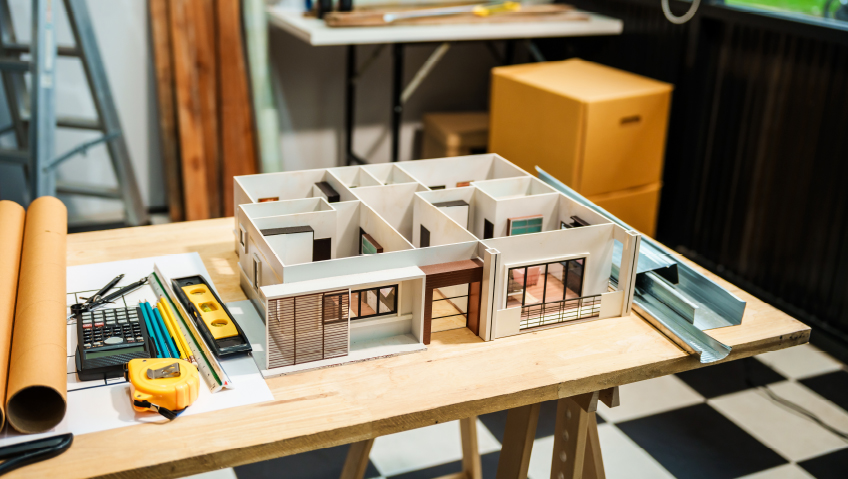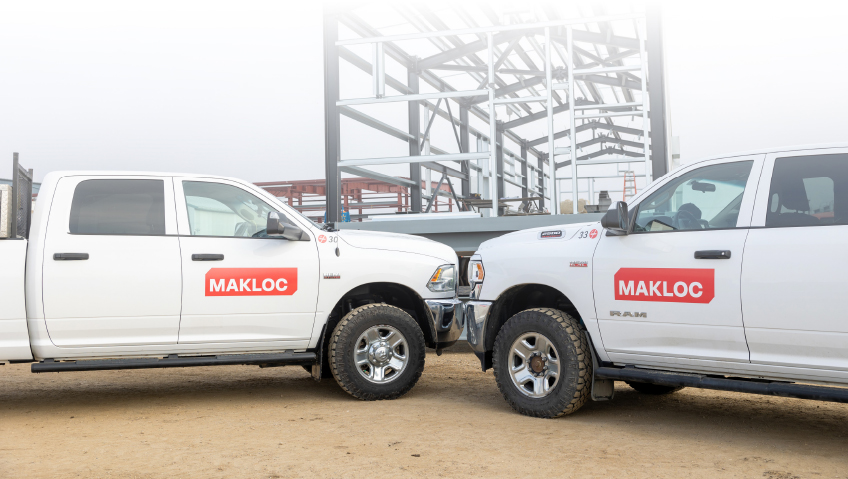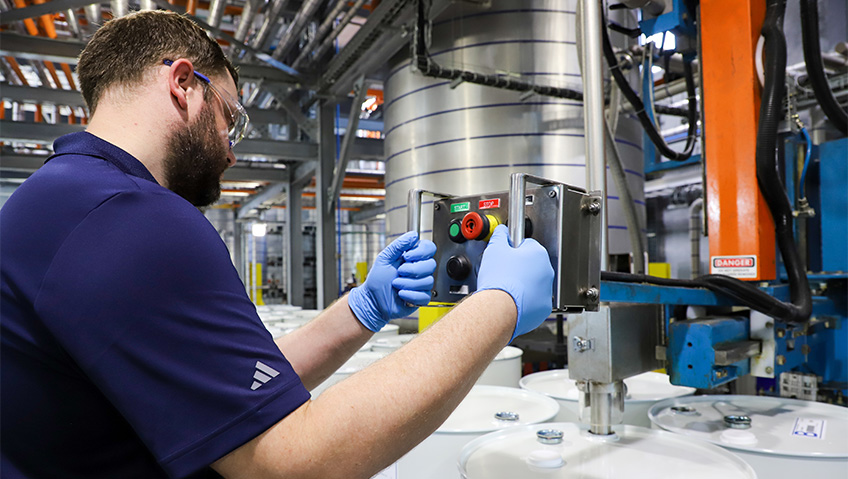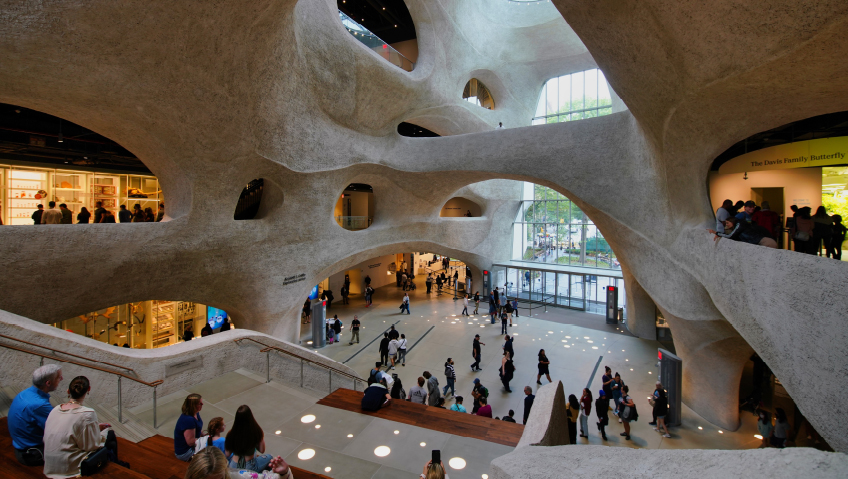When it comes to the choice between tearing down and building new or retrofitting, renovating or remodeling, we’ve been told by professionals that the greenest building is the one that’s already built. But does it make financial sense? Are there real energy savings? We take a close look at the benefits and challenges of retrofitting, renovating, and remodeling, and the exciting possibilities they afford home and building owners.
First, I must admit to my “guilty pleasure”—watching home renovation shows on cable TV. Inevitably, asbestos is found in walls, electrical systems are fire hazards, the homeowners make unreasonable demands of the designer and contractor, and the trades work around the clock to get the miraculous transformation completed in just three days. Nail-biting excitement!
But far from reality. Retrofitting, renovating, and remodeling homes have several things in common: they take longer than three days to complete, they do assuredly add value to the building, and they increase the owner’s enjoyment of the home. Although they can overlap, they are different processes and serve different purposes.
Retrofitting specifically refers to improving the functionality of the home by upgrading the building envelope or adding new technology—for example, solar panels or energy-efficient heating and cooling systems—and can be standalone projects or part of an entire home renovation. However, while retrofitting can be a crucial aspect of home improvement, it seems to have escaped the notice of cable TV.
Changes to Canadian building codes are expected to result in net-zero construction of new houses by the early 2030s. However, for the foreseeable future, there will be far more existing houses than new builds, where on average, space heating will continue to account for 63 percent of energy consumption unless those homes are retrofitted, according to a November 2023 Progress Report, Retrofitting Canada’s Homes, prepared by Deep Energy Canada in conjunction with Green Communities Canada.
In 2021, Natural Resources Canada introduced the Canada Greener Homes Grant Program and the EnerGuide Rating System, which has been successful in stimulating some retrofits with grants of up to $5,000 for specific upgrades, mainly heat pumps.
While heat pumps do reduce energy consumption by about two-thirds, the authors of the report argue that starting with a heat pump is not the most efficient way to begin retrofitting, and the best way to improve thermal efficiency of a home is to reduce the overall amount of energy needed. This first step can be achieved by controlling and reducing air leakage, adding insulation, and upgrading windows and doors, which can reduce overall energy demand.
The second step—moving away from fossil-fueled equipment—could happen in the course of a large comprehensive retrofit and renovation, or it can wait until the existing equipment reaches the end of its life cycle and needs to be replaced. But in the meantime, the energy consumption will be lowered, and smaller, appropriately sized heat pumps can be installed when the time is right.
The final step toward a deep retrofit is the addition of a renewable energy system, typically solar photovoltaic panels, to supply some or all the energy needed.
While building new ‘net-zero’ houses is certainly an achievable goal and is being done, the authors of the report admit retrofitting existing houses to net-zero is challenging and costly. “Nevertheless, applying as many of these strategies as possible in each house can produce deep energy savings and virtually eliminate GHG emissions,” which they view as a practical approach to climate protection.
Larger grants to cover, or at least partly cover, the high cost of building envelope improvement would help speed up the process of GHG emissions reduction, improving the quality of life for many homeowners and the resale value of their homes.
Similar issues are being discussed in the U.S. Department of Energy, which indicates building wall energy loss in the U.S. accounts for about two quads of energy annually, costing homeowners billions of dollars. Enclosure retrofits can save significant energy, reduce GHG emissions, and save homeowners millions of dollars. But according to the experts at the Green Home Institute, cited on the American Institute of Building Design website, “High performance building envelope retrofit systems are rarely selected for these applications. Current solutions are expensive and/or unfamiliar to many designers, builders, contractors, and code officials and therefore are perceived as risky.”
But help is on the way through the Building Science Advisor. This tool was originally developed to assist professionals in designing energy-efficient wall systems for new construction and has now added a retrofit module that provides recommendations on how to address a retrofit in such a manner that will not create a moisture or durability problem.
When it comes to renovating, the process can be as simple as making cosmetic improvements, such as updating cabinets, replacing worn-out flooring, or installing an improved lighting system, sometimes done in preparation to put a home on the market. But it can be far more extensive and comprehensive, transforming the structure by changing the layout or adding extensions to improve functionality and aesthetics, incorporating energy retrofits, or even repurposing an entire structure. While these improvements do add value to the building, they may not increase sales revenues as much as the cable TV shows suggest, because there are multiple factors influencing sale price in an unpredictable market.
The home reno shows, while unrealistic in many aspects, do serve a purpose beyond mere entertainment, as they demonstrate that a tired old building that is not energy-efficient and doesn’t serve the needs of contemporary families can be given new life. They also serve as a cautionary tale, showing that these are not DIY projects, nor should homeowners be tempted to work with a contractor who offers a low price but doesn’t offer credentials or a written contract outlining the scope of the work.
The same care as is taken to choose professional architects, engineers, interior designers, and licensed contractors for a new build applies doubly to a retrofit, a face-lift reno, or a complete remodeling project, because there are hidden hazards, as devotees of home reno shows know only too well! But when the work is done professionally, the results can be stunning and provide owners with the dream home or customized, re-purposed building they’ve been looking for—and which, it turns out, they already own.
The terms “remodel” and “renovate” seem to be used interchangeably, with a preference in the U.S. for the term “remodel”, hence the National Association of the Remodeling Industry (NARI), whereas in Canada the preferred term is “renovate” as reflected in the professional association, RenoMark™. NARI, with the slogan Remodeling Done Right, was formed in 1982, the result of the merger of two organizations with roots going back to initiatives established by Presidents Roosevelt and Eisenhower. It maintains headquarters in Wheeling, Illinois and has chapters nationwide and members in 49 states. Among the members are Certified Green Professionals.
The core purpose of the volunteer-driven association is to strengthen the professionalism of the remodeling industry, to build public trust, and to equip remodelers nationwide with resources to succeed.
The Canadian RenoMark™ program was established 19 years later, in 2001, by BILD-GTA (Building Institute and Land Development-Greater Toronto Area) with the purpose of connecting homeowners to professional renovators and contractors who are committed to quality workmanship and customer satisfaction and who are members of the Canadian Home Builders’ Association (CHBA). In addition, Professional RenoMark™ Renovator members must abide by a renovation-specific Code of Conduct.
Among other things, a RenoMark™ Renovator must be a member in good standing of the local home builders’ association; return homeowners’ calls within two days; provide a detailed written contract; carry a minimum of $2 million in liability insurance; have all applicable licences and permits; have and/or work only with subcontractors which have workplace safety and employers’ liability coverage; offer a minimum two-year warranty on work; have access to training and education; and abide by the local home builders’ association’s code of ethics.
In addition, to help the construction industry meet Canada’s GHG reduction goals, the CHBA has introduced the Net Zero Home Labelling Program and provides a list of contractors certified to retrofit existing homes as well as build new ones.
Both NARI and CHBA host awards ceremonies where the best of the best in renovations are showcased. The NARI Achievement Awards recognize outstanding achievements by members (individual, company, or chapter) who have worked to promote or enhance professional remodeling, with the Contractor of the Year (CotY) recognized as the premier award in the remodeling industry in the U.S.
This past April in Tysons Corner, Virginia, NARI recognized 43 U.S. contractors with CotY Awards across various categories and price points, including single room, additions, exterior, deck, and whole home remodeling. Many of the winners leveraged Job Thread remodeling contractor software in their projects.
CHBA announced the 2024 National Awards for Housing Excellence at an awards gala in Saint John, New Brunswick in May, where nearly 300 volunteer industry experts had to make tough choices from among the 900-plus entries, which included categories for home renovations, either single room or whole home, at various price points, and for Net Zero homes, with one category for either custom-built or renovated homes.
To enter the competition for Net Zero homes, builders/renovators must ensure the homes have met the technical and energy efficiency requirements as set by the CHBA Net Zero Home Labelling Program, thus levelling the playing field for entrants while allowing the judges to focus on the design characteristics of the home.
While the 2024 finalists and winner were recognized for their custom-built net zero homes, the 2023 winner was the “Modern Cottage,” a Net Zero Home Renovation by My House Design/Build with Emphasis Studio and Capture Energy of Vancouver, which received the top honour at the CHBA’s annual gala held that year in Banff, Alberta.
Modern Cottage, a 1967 split-level bungalow in Surrey, British Columbia, was transformed “into a comfortable, healthy ‘forever home’” for its retired owners and proves that energy-efficient requirements can be melded with great design. According to the CHBA’s citation, “the home achieved outstanding energy performance results—it used 197 GJs per year prior to the renovation and 57 GJs per year after the renovation. Those 57 GJs were then completely offset by 60 GJs gained from its solar photovoltaic (PV) panels. This translates into approximately $1,260 per year in savings on energy bills for the homeowner.”
Prior to the renovation, the home emitted 8.8 tonnes of GHGs per year which has been lowered to 0.8 tonnes, greatly reducing its environmental footprint. And because of the superior HVAC equipment, the homeowners now enjoy exceptional indoor air quality.
The 2024 Renovation Excellence Award for best overall performance in home renovation was awarded to a previous winner, Ultimate Renovations from Calgary, who was a finalist in five categories. The company received three individual awards: Best Kitchen Renovation under $70,000, “Woodbine Elegance”; Best Bathroom Renovation, “Sovereign Spa Symphony”; and Best Basement Renovation, “Sovereign Splendor,” in addition to the best-overall award.
The results of all these award-winning renovations are stunning. I could see myself enjoying the benefits of the deep retrofit of Modern Cottage in Surrey, or preparing gourmet meals in the beautifully designed Calgary kitchen, relaxing and rejuvenating in the bathroom spa and making full use of the basement, with its gym workout area and viewing area—where I wouldn’t be watching home reno cable TV shows any more because I would have the ultimate in renovated homes.






